
Ayahuasca is a South American psychoactive brew, traditionally used by Indigenous cultures and folk healers in the Amazon and Orinoco basins for spiritual ceremonies, divination, and healing a variety of psychosomatic complaints. Originally restricted to areas of Peru, Brazil, Colombia and Ecuador, in the middle of the 20th century it became widespread in Brazil in the context of the appearance of syncretic religions that use ayahuasca as a sacrament, like Santo Daime, União do Vegetal and Barquinha, which blend elements of Amazonian Shamanism, Christianity, Kardecist Spiritism, and African-Brazilian religions such as Umbanda, Candomblé and Tambor de Mina, later expanding to several countries across all continents, notably the United States and Western Europe, and, more incipiently, in Eastern Europe, South Africa, Australia, and Japan.

A curandero is a traditional native healer or shaman found primarily in Latin America and also in the United States. A curandero is a specialist in traditional medicine whose practice can either contrast with or supplement that of a practitioner of Western medicine. A curandero is claimed to administer shamanistic and spiritistic remedies for mental, emotional, physical and spiritual illnesses. Some curanderos, such as Don Pedrito, the Healer of Los Olmos, make use of simple herbs, waters, or mud to allegedly effect their cures. Others add Catholic elements, such as holy water and pictures of saints; San Martin de Porres for example is heavily employed within Peruvian curanderismo. The use of Catholic prayers and other borrowings and lendings is often found alongside native religious elements. Many curanderos emphasize their native spirituality in healing while being practicing Catholics. Still others, such as Maria Sabina, employ hallucinogenic media. Most of the concepts related to curanderismo are Spanish words, often with medieval, vernacular definitions.
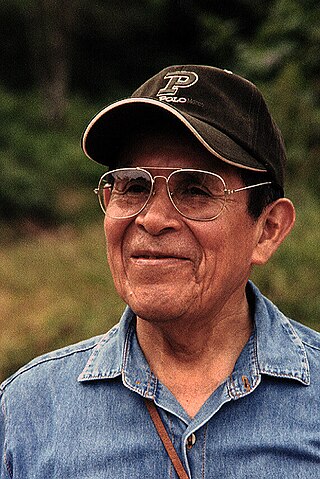
Pablo Cesar Amaringo Shuña was a Peruvian artist, renowned for his intricate, colourful depictions of his visions from drinking the entheogenic plant brew ayahuasca. He was first brought to the West's attention by Dennis McKenna and Luis Eduardo Luna, who met Pablo in Pucallpa while traveling during work on an ethnobotanical project. Pablo worked as a vegetalista, a shaman in the mestizo tradition of healing, for many years; up to his death, he painted, helped run the Usko-Ayar school of painting, and supervised ayahuasca retreats.

Cohoba is a Taíno transliteration for a ceremony in which the ground seeds of the cojóbana tree were inhaled, the Y-shaped nasal snuff tube used to inhale the substance, and the psychoactive drug that was inhaled. Use of this substance produced a hallucinogenic, entheogenic, or psychedelic effect. The cojóbana tree is believed by some to be Anadenanthera peregrina although it may have been a generalized term for psychotropics, including the quite toxic Datura and related genera (Solanaceae). The corresponding ceremony using cohoba-laced tobacco is transliterated as cojibá. This was said to have produced the sense of a visionary journey of the kind associated with the practice of shamanism.
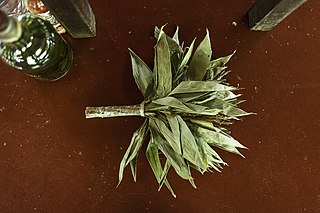
Chakapa is a Quechua word for a shaker or rattle constructed of bundled leaves. Bushes of the genus Pariana provide the leaves for the chakapa. Chakapa is also the common name for these bushes.
Alchornea castaneifolia is a medicinal plant native to Amazon Rainforest vegetation in Brazil.
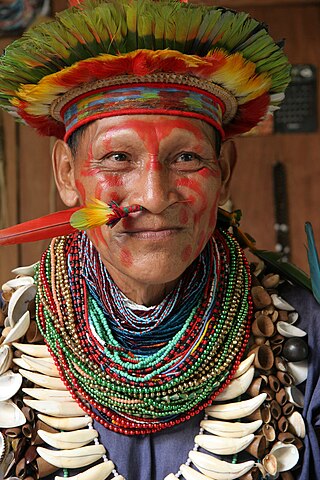
Yachay is a special type of phlegm generated by shamans and sorcerers of the Peruvian Amazon Basin which is believed to contain the essence of their power in the form of virotes, tsentsak, darts, arrows, or splinters of bone that are believed to be contained in the phlegm. It is believed that these may be fired from the mouth, and that being pierced by virotes causes various conditions. These may be removed by a shaman, who sucks them out of the victim's body.

The Jivaroan peoples are the indigenous peoples in the headwaters of the Marañon River and its tributaries, in northern Peru and eastern Ecuador. The tribes speak the Chicham languages.
Tamshiyacu is the name of a town in the Fernando Lores District which is located in Iquitos - northeastern Peru.

Amazonian Kichwas are a grouping of indigenous Kichwa peoples in the Ecuadorian Amazon, with minor groups across the borders of Colombia and Peru. Amazonian Kichwas consists of different ethnic peoples, including Napo Kichwa and Canelos Kichwa. There are approximately 419 organized communities of the Amazonian Kichwas. The basic socio-political unit is the ayllu. The ayllus in turn constitute territorial clans, based on common ancestry. Unlike other subgroups, the Napo Kichwa maintain less ethnic duality of acculturated natives or Christians.
Vegetalismo is a term used to refer to a practice of mestizo shamanism in the Peruvian Amazon in which the shamans—known as vegetalistas—are said to gain their knowledge and power to cure from the vegetales, or plants of the region. Many believe to receive their knowledge from ingesting the hallucinogenic, emetic brew ayahuasca.

Tsentsak are invisible pathogenic projectiles or magical darts utilized in indigenous and mestizo shamanic practices for the purposes of sorcery and healing throughout much the Amazon Basin. Anthropologists identify them as objects referenced in emic accounts that represent indigenous beliefs. Tsentak are not recognized in scientific medicine.
The Yacuruna are a mythical water people of the Amazon basin who live in beautiful underwater cities, often at the mouths of rivers. Belief in the Yacuruna is most prominently found among indigenous people of the Amazon. The term is derived from the Quechua language, yaku ("water") and runa ("man").
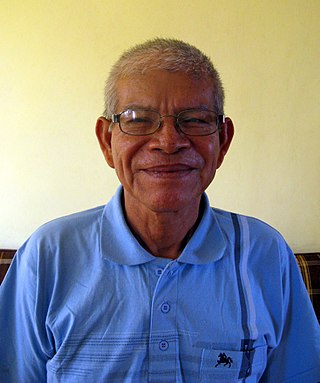
Guillermo Arévalo Valera is a Shipibo vegetalista and businessperson from the Maynas Province of Peru. His Shipibo name is Kestenbetsa.
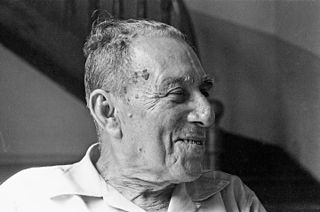
Manuel Córdova-Rios was a vegetalista (herbalist) of the upper Amazon, and the subject of several popular books.
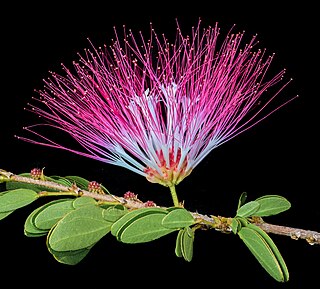
Calliandra angustifolia is a small, riparian tree species of the Amazon Basin.
The Eshuva are the Harákmbut-language sung prayers of Peru's Huachipaire people. They are sung as an expression of Huachipaire religious myths to summon nature spirits, to help alleviate illness or promote well-being, as part of traditional ceremonies, and during the initiation of the new Eshuva singers. Eshuva songs are performed without musical accompaniment. Since they are sung only in the Harákmbut language, they help safeguard the Huachipaire people's language, values, and worldview.

Liberation Movement is a music and artist collective founded in 2010 by Resurrector in San Francisco, California. Liberation Movement evolved out of San Francisco-based underground music project Heavyweight Dub Champion. The collective has become known for its live performances and as of 2020 has not officially released any recorded material. They have performed at many music festivals throughout the Americas. Reality Sandwich calls Liberation Movement "a new collaborative music project that pushes the boundaries of human experience". Jambase described their 2013 Symbiosis Gathering performance as "one of the most moving, mind-blowing musical experiences in recent memory."
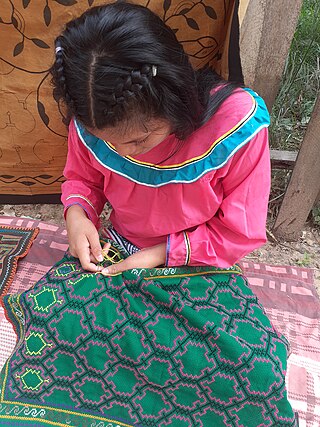
The term kené, or kene, refers to the traditional designs painted by women and men on ceramics, textiles, wooden surfaces, and bodies of the Shipibo-Conibo people from the central Amazon of Peru. Kené designs are composed of geometric patterns that express the Shipibo worldview and spirituality, which tends to seek beauty and balance of the self in relation to the natural environment. When the design is embroidered on a textile, it is called kewé. On April 16, 2008, they were declared part of the Cultural Heritage of the Nation in Peru.

Olivia Arévalo Lomas was a Peruvian Onanya of Shipibo-Conibo Indigenous people of Ucayali region, a Ayahuasca plant medicine healer, and environmental and cultural rights activist. She advocated “for the recognition of indigenous communities' rights and the preservation of their ancestral territories.” She was also being "considered a wealth of knowledge about Amazonian plants and native traditions."















